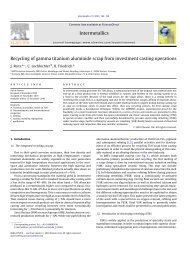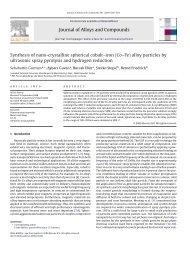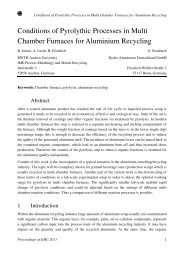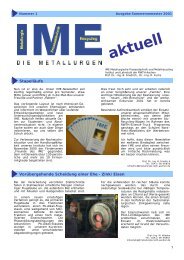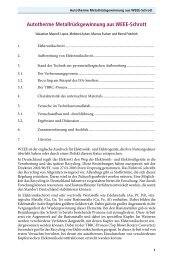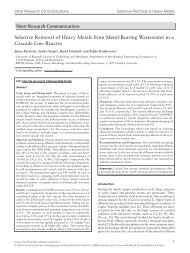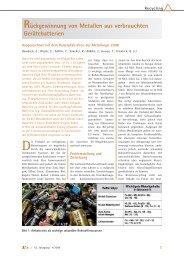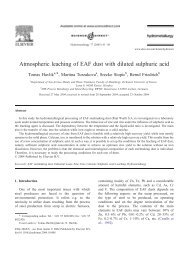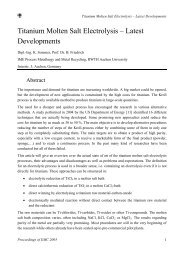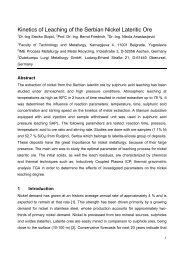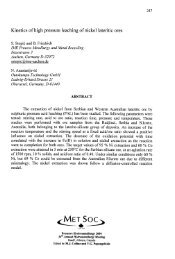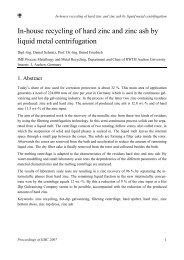Development of a Calculation Method for Recycling Efficiencies of ...
Development of a Calculation Method for Recycling Efficiencies of ...
Development of a Calculation Method for Recycling Efficiencies of ...
You also want an ePaper? Increase the reach of your titles
YUMPU automatically turns print PDFs into web optimized ePapers that Google loves.
or papers. An advantage <strong>of</strong> this method is that these materials are wellknownin composition and weight fractions because <strong>of</strong> the material datasheets that exist <strong>for</strong> all types <strong>of</strong> batteries.2.2 Key Elements <strong>for</strong> the <strong>Calculation</strong>For the proposed simple calculation method the following key elementsare set as the calculation basis <strong>for</strong> recycling efficiencies:1. prescribed recycling efficiencies apply <strong>for</strong> the average weight <strong>of</strong>the battery scrap2. all elements or compounds being present in new batteries that canbe captured and clearly identified in a product can be taken intoaccount3. elements or compounds originating from new batteries that arechemically or energetically used during the recycling process donot count according to the directive4. as reference <strong>for</strong> calculating the recycling efficiencies the mass <strong>of</strong>the waste batteries without humidity is used (according to the EUBattery Directive), not considering any plastic shells or electronicsfrom battery packs5. recycling efficiency is defined as the weight ratio <strong>of</strong> theacceptable “product fraction(s)” and the considered batteryscrap mass6. battery recycling processes may consist <strong>of</strong> multiple (sub)steps;each step is assessed individually and recovery values have to beadded7. any material produced during the entire recycling process thatcannot be considered as a product with regard to the EU WasteDirective is not accepted8. all produced elements and downstream compounds are to beaccepted by their full weight, if this element or compound wascomponent <strong>of</strong> the new battery<strong>Development</strong> <strong>of</strong> a <strong>Calculation</strong> <strong>Method</strong> <strong>for</strong> <strong>Recycling</strong> <strong>Efficiencies</strong> <strong>of</strong> Battery <strong>Recycling</strong> Processes 3



